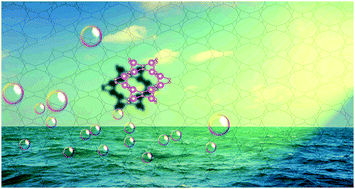Hexagonal M2C3 (M = As, Sb, and Bi) monolayers: new functional materials with desirable band gaps and ultrahigh carrier mobility†
Abstract
Based on first-principles calculations, we propose a new type of two-dimensional (2D) material M2C3 (M = As, Sb, and Bi) showing an infinite hexagonal lattice, in which C atoms adopt sp2 hybridization and M atoms prefer three-fold coordination with lone pair electrons. Such monolayers are calculated to be stable verified by their moderate cohesive energies, the absence of imaginary modes in their phonon spectra, and the high melting points predicted via molecular dynamics simulations. Sb2C3 and Bi2C3 monolayers possess intrinsic band gaps of 1.58 and 1.23 eV (based on HSE06 calculations), values suitable for photovoltaic applications. The intrinsic acoustic-phonon-limited carrier mobility of the As2C3 sheet can reach up to 4.45 × 105 cm2 V−1 s−1 for electrons at room temperature, higher than that of (60–200 cm2 V−1 s−1) MoS2 and (∼103 cm2 V−1 s−1) few-layer phosphorene, approaching the figure of merit in graphene (3 × 105 cm2 V−1 s−1). The well-located band edge and visible light absorption make stretched Sb2C3 a potentially promising optoelectronic material for photocatalytic water splitting. Besides, Sb2C3/As2C3 excitonic solar cells have been proposed, and their power conversion efficiencies are estimated to exceed 23%. First-principles calculations have demonstrated that Sb2C3/Bi2C3 heterojunctions are indeed 2D node-line semimetals in the absence of spin–orbit coupling.



 Please wait while we load your content...
Please wait while we load your content...